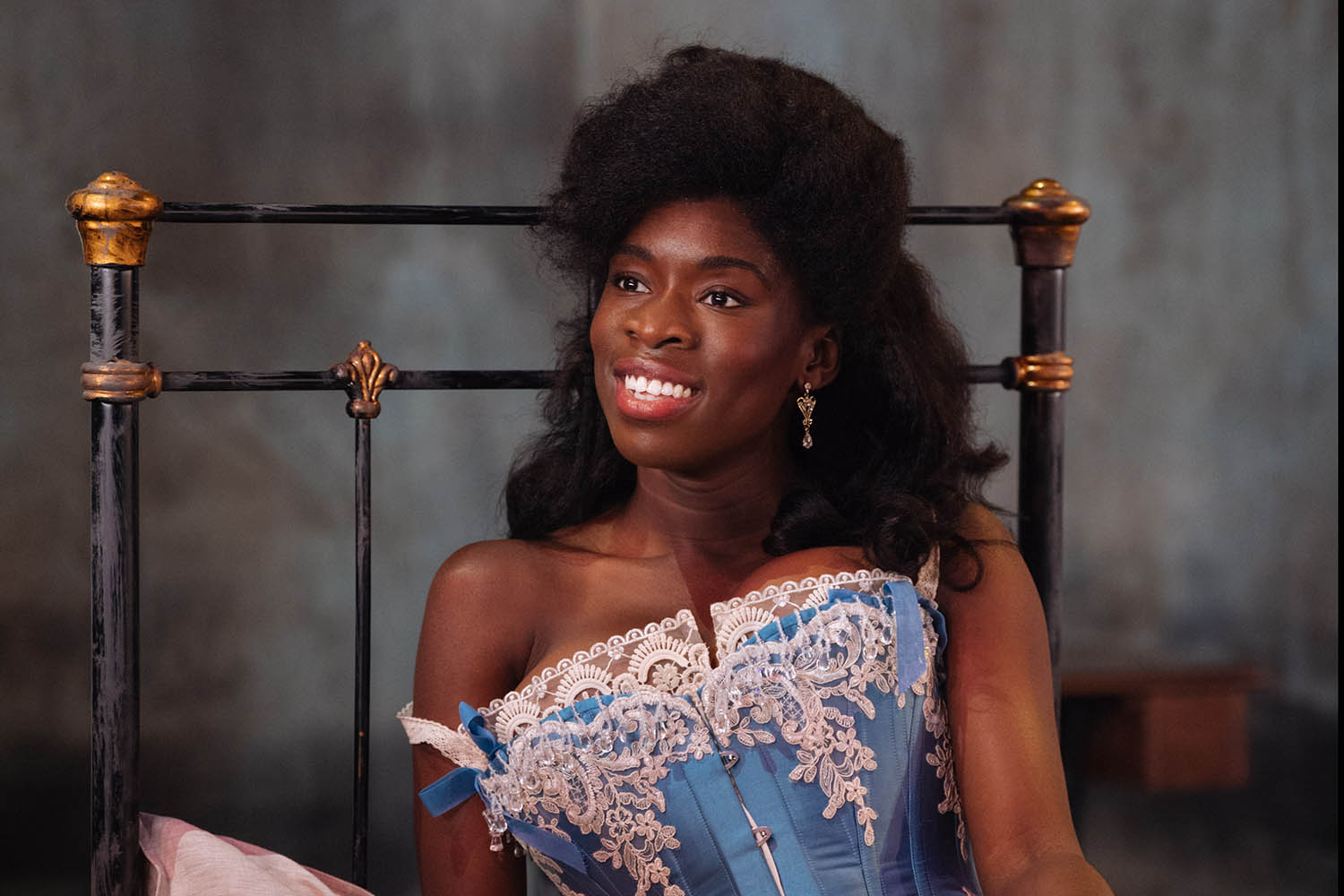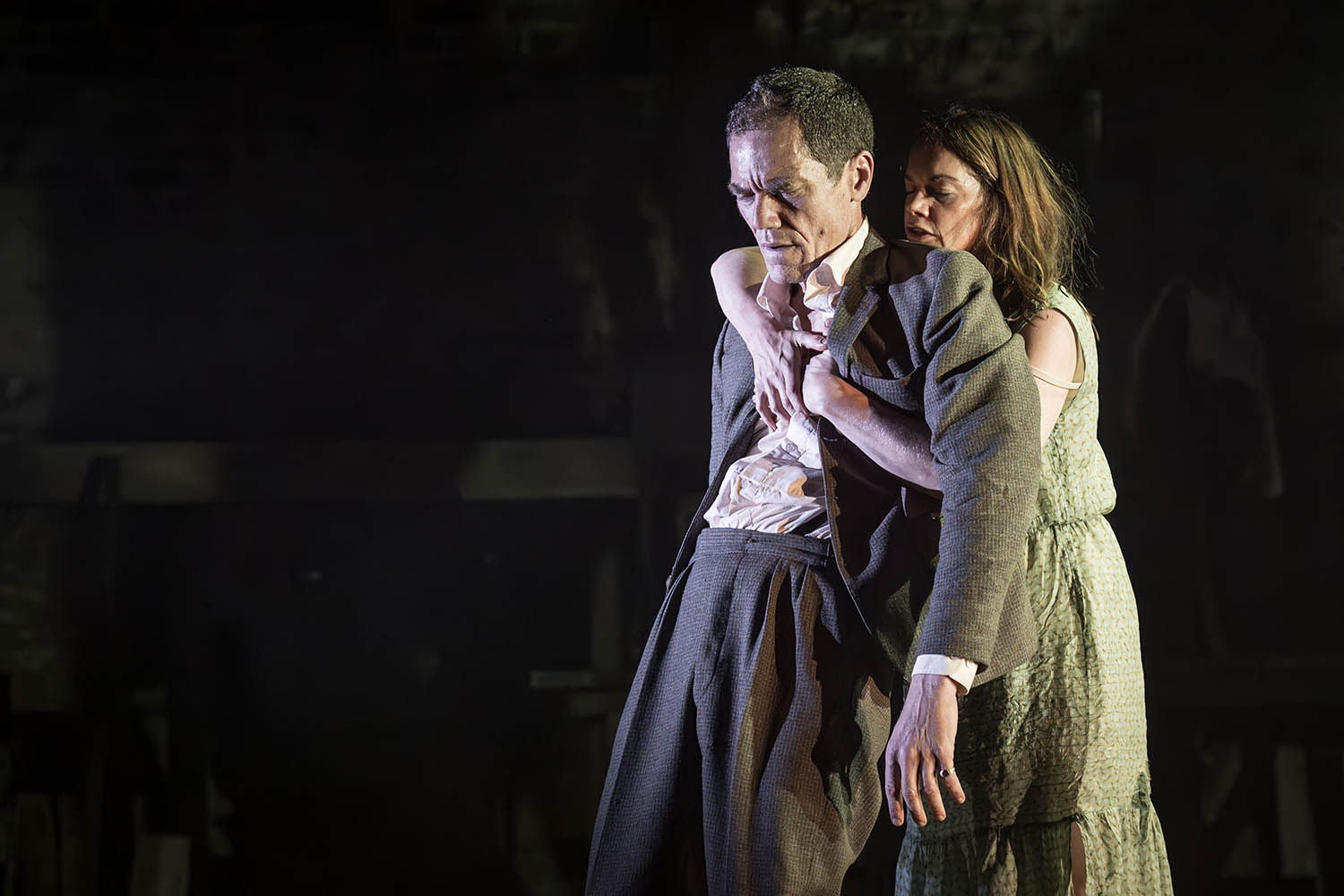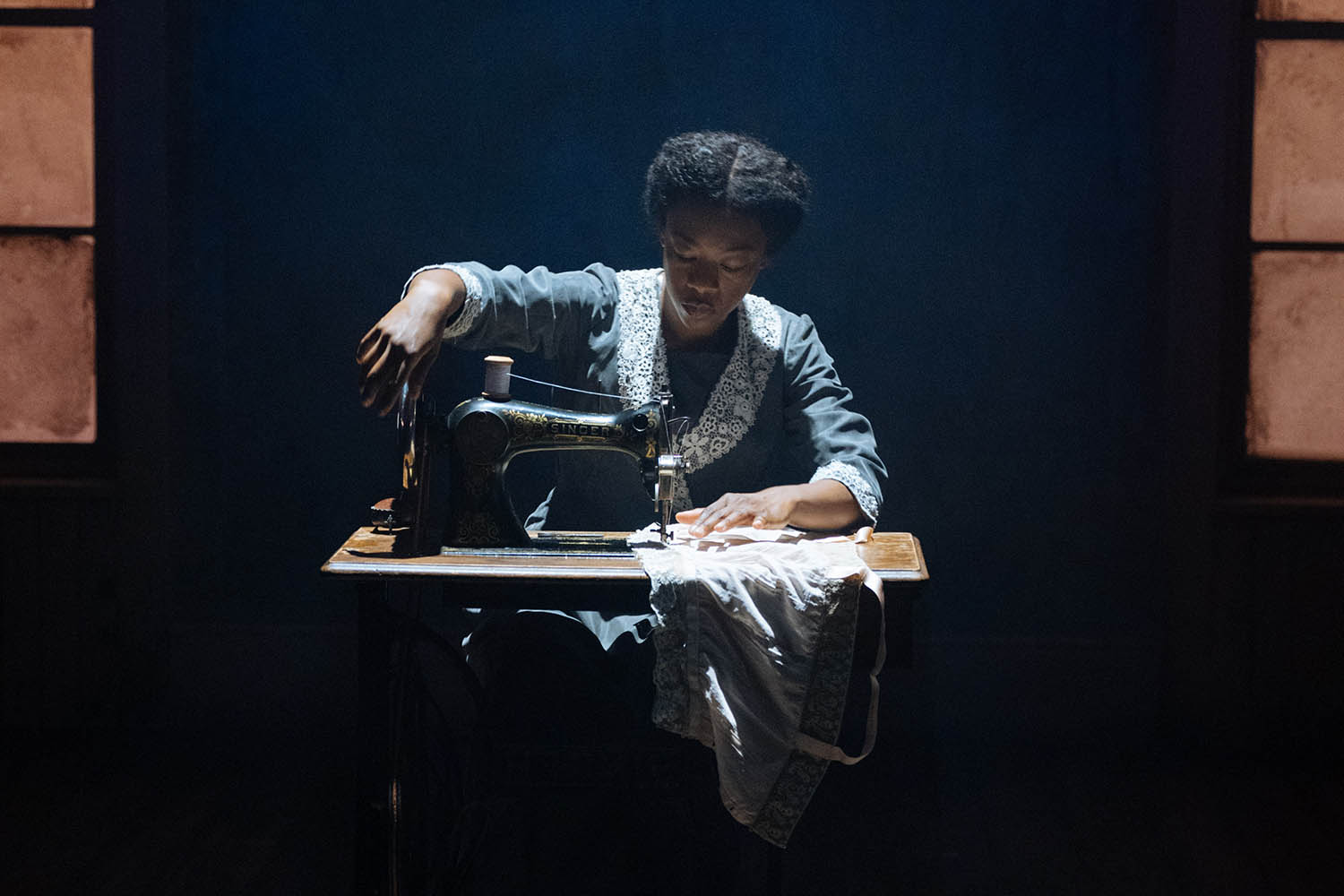Intimate Apparel is one of the best plays I have seen in 28 years as the Observer’s theatre critic. Tightly focused but far-reaching, it sees American hopes and disappointments through a new pair of eyes. Alongside Arthur Miller’s Willy Loman – the white salesman – stands Lynn Nottage’s Esther, the black seamstress without a second name.
The drama has lost none of its lustre since Laurence Boswell directed Tanya Moodie in the 2014 British premiere in Bath. It is no surprise that Lynette Linton’s production should be equally complete: superlatively acted, spinning with particular life. Linton has been a tremendous director of Nottage’s plays – from Sweat, a lament for the rust belt, to Clyde’s, a hymn to the sandwich. Now she animates the vital idea of Intimate Apparel: that people do not always express themselves in words.
Esther, shy and single, living in a New York boarding house in 1905, has never learned to read or write: she was set to work as a child. Yet she is skilled and purposeful, and subtly, generously expressive. Her language is the fabric with which she works: Japanese silk and Scottish tweed, pink silk and blue flannel, white satin embroidered with orange blossom. She describes herself to a would-be lover by conjuring the shimmer of material on her skin.

Faith Omole plays a sex worker in Intimate Apparel
As Esther, Samira Wiley’s touch is so fine that when she runs her hand admiringly across a piece of cloth, she makes spectators feel its smoothness and crinkles. She buys fabric from a Romanian Orthodox Jew who talks to her – and about her – through material that is “fine and delicate”; they may not touch each other but they can touch the same fabric. She takes up with a man who is revealed as a brute when he gives away a silk smoking jacket she has lovingly made. The audience gasp in ways rarely heard in the theatre: it is as if cloth has a human character.
Her touch is so fine that when she runs her hand on cloth, she makes us feel its smoothness and crinkles
Delicate this might be but never precious. Esther’s speciality is corsets. She makes one for a wealthy white woman who comes on to her but doesn’t let her use the front door, and one for a black sex worker who plays soul piano. She makes one for herself, hoping to tempt her man. Designer Alex Berry creates spectacular corsets with ruffles at the breast, long dangling cords, and crisscross laces to ensure wasp waists. The women circle the stage in them as if on a merry-go-round.
It is extraordinary how a play with so precise a focus encompasses tumultuous love and world events: the building of the Panama canal, with sweated labour, is crucial to the plot. It is marvellous how a subdued central character can exert so strong a force. Wiley gives one of the performances of the year: beginning as if occluded, slowly lighting up from within, making every flick of her eyes tell, ending on an astonishing pleasurable tremor. Just as Miller was inspired to write Death of a Salesman by the story of an uncle, so Nottage was driven to create Intimate Apparel by coming across the forgotten history of her seamstress great-grandmother. She has restored and illuminated that history now.

Michael Shannon and Ruth Wilson ‘shadowbox with their feelings’ in A Moon for the Misbegotten
Director Rebecca Frecknall has long been remaking the canon of American drama, brilliantly seeing into the heart of A Streetcar Named Desire and rescuing Summer and Smoke from oblivion, stripping away period clutter to feel a pulse. She brings drama but not dynamism to the veiled confessions of Eugene O’Neill’s A Moon for the Misbegotten, a sequel to Long Day’s Journey into Night, in which a gorgeously rapscallion young woman, her scapegrace farmer pa and the down-from-Broadway man with whom she is in love shadowbox with their feelings, concealing affection by insult, until a truth is revealed and reburied.
It is strongly acted by David Threlfall, looking like an Old Testament prophet, thundering like a sot, and Michael Shannon, rigid with remorse, as opaque as a turtle. At the centre, Ruth Wilson is a transfixing mixture of earthiness and otherness: storming through the audience as if she were about to stop oil; waving a pitchfork, raunchy in dungarees; gently easing her lover into revelation.
The culmination is disappointingly traditional: lively woman puts her life aside to make a man feel better. Frecknall does not shirk the implications. Amid Tom Scutt’s design of broken beams and ladders, Wilson cradles her lover as Mary held the crucified Christ. Jack Knowles’s lighting floods the scene with gold. They are transfigured. Maddening but mesmeric.
Photographs by Helen Murray; Marc Brenner

